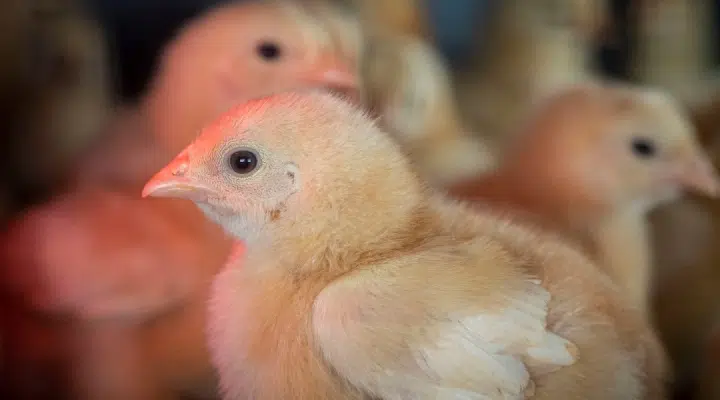Global Poultry Markets: Optimistic Outlook but Avian Influenza Is a Wild Card

Collected Image
Although prices have been somewhat under pressure in Q1 2023, the outlook for global poultry markets remains optimistic. At a time when eggs are reaching record-high prices globally and competing proteins like beef and pork are expected to remain expensive in most markets, demand for poultry meat the cheapest animal protein remains strong.
At the same time, ongoing high prices amid weaker economic conditions are leading to some demand erosion in poultry markets with sizable populations of low-income consumers. “This is happening in Africa and Asia in particular, where consumers are returning to cheaper, traditional plant-based protein sources,’’ explains Nan-Dirk Mulder, Senior Analyst – Animal Protein at Rabobank.
Avian influenza poses an ongoing global threat
Global trade is expected to stay strong this year. Major importing countries and regions like Europe, Japan, China, Singapore, the Philippines, Saudi Arabia, and the Gulf States are operating under relatively tight conditions, due partly to supply challenges and partly to AI. ”Import volumes will likely rise, and prices will be affected by availability in Brazil and the US, which looks relatively abundant for this year,” says Mulder.
The development of AI will be a big wild card for trade and poses an ongoing global threat. Some countries have already adopted vaccination programs, while others are mulling it over. AI has continued to spread further into Latin America, getting closer to Brazil’s southern production states, which account for more than 60% of the country’s production.
“If AI hits some of these states, the potential impact on global trade could be big. Major importing countries may choose to change their sourcing, benefiting alternative exporters like the US, the EU, Ukraine, Russia, Turkey, Thailand, and China. This would result in higher prices, and for some submarkets, like breast and whole birds, there would be insufficient supply, which could have an additional bullish impact on prices,” explains Mulder.
Operational challenges persist
Although, performance varies between regions, in most places the focus in the coming period should return to the operational side, given ongoing high and volatile feed and energy costs, limited availability of breeding stock, high construction costs, and major AI risks.
“Over the course of the year, we expect soybean and corn prices to drop 5% to 10% compared to Q1 2023 levels, mainly driven by expectations of good harvests in Brazil and eastern Europe and improving US forecasts. This will provide some relief for producers, but will still mean historically high feed prices in most regions,” adds Mulder.
Meanwhile, energy prices, which have been volatile, depend on developments in the Russia-Ukraine war and competition for liquefied natural gas in global markets, especially once China’s economy normalizes following the removal of Covid-19 measures.
At the same time, ongoing high prices amid weaker economic conditions are leading to some demand erosion in poultry markets with sizable populations of low-income consumers. “This is happening in Africa and Asia in particular, where consumers are returning to cheaper, traditional plant-based protein sources,’’ explains Nan-Dirk Mulder, Senior Analyst – Animal Protein at Rabobank.
Avian influenza poses an ongoing global threat
Global trade is expected to stay strong this year. Major importing countries and regions like Europe, Japan, China, Singapore, the Philippines, Saudi Arabia, and the Gulf States are operating under relatively tight conditions, due partly to supply challenges and partly to AI. ”Import volumes will likely rise, and prices will be affected by availability in Brazil and the US, which looks relatively abundant for this year,” says Mulder.
The development of AI will be a big wild card for trade and poses an ongoing global threat. Some countries have already adopted vaccination programs, while others are mulling it over. AI has continued to spread further into Latin America, getting closer to Brazil’s southern production states, which account for more than 60% of the country’s production.
“If AI hits some of these states, the potential impact on global trade could be big. Major importing countries may choose to change their sourcing, benefiting alternative exporters like the US, the EU, Ukraine, Russia, Turkey, Thailand, and China. This would result in higher prices, and for some submarkets, like breast and whole birds, there would be insufficient supply, which could have an additional bullish impact on prices,” explains Mulder.
Operational challenges persist
Although, performance varies between regions, in most places the focus in the coming period should return to the operational side, given ongoing high and volatile feed and energy costs, limited availability of breeding stock, high construction costs, and major AI risks.
“Over the course of the year, we expect soybean and corn prices to drop 5% to 10% compared to Q1 2023 levels, mainly driven by expectations of good harvests in Brazil and eastern Europe and improving US forecasts. This will provide some relief for producers, but will still mean historically high feed prices in most regions,” adds Mulder.
Meanwhile, energy prices, which have been volatile, depend on developments in the Russia-Ukraine war and competition for liquefied natural gas in global markets, especially once China’s economy normalizes following the removal of Covid-19 measures.
Source: https://www.morningagclips.com
Previous Story
- Global trade growth to remain subdued in 2023,...
- Global Industrial Machinery Market Size, Share and Forecast...
- Why Foxconn needs to be in a hurry...
- IMF upgrades its outlook for the global economy...
- Middle East and Africa hotel pipeline activity shines...
- UAE business activity remained 'robust' at end of...
- Oil prices drop 5% on China demand concerns...
- Global data rush paving the way for boom...